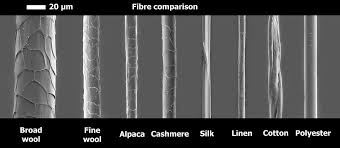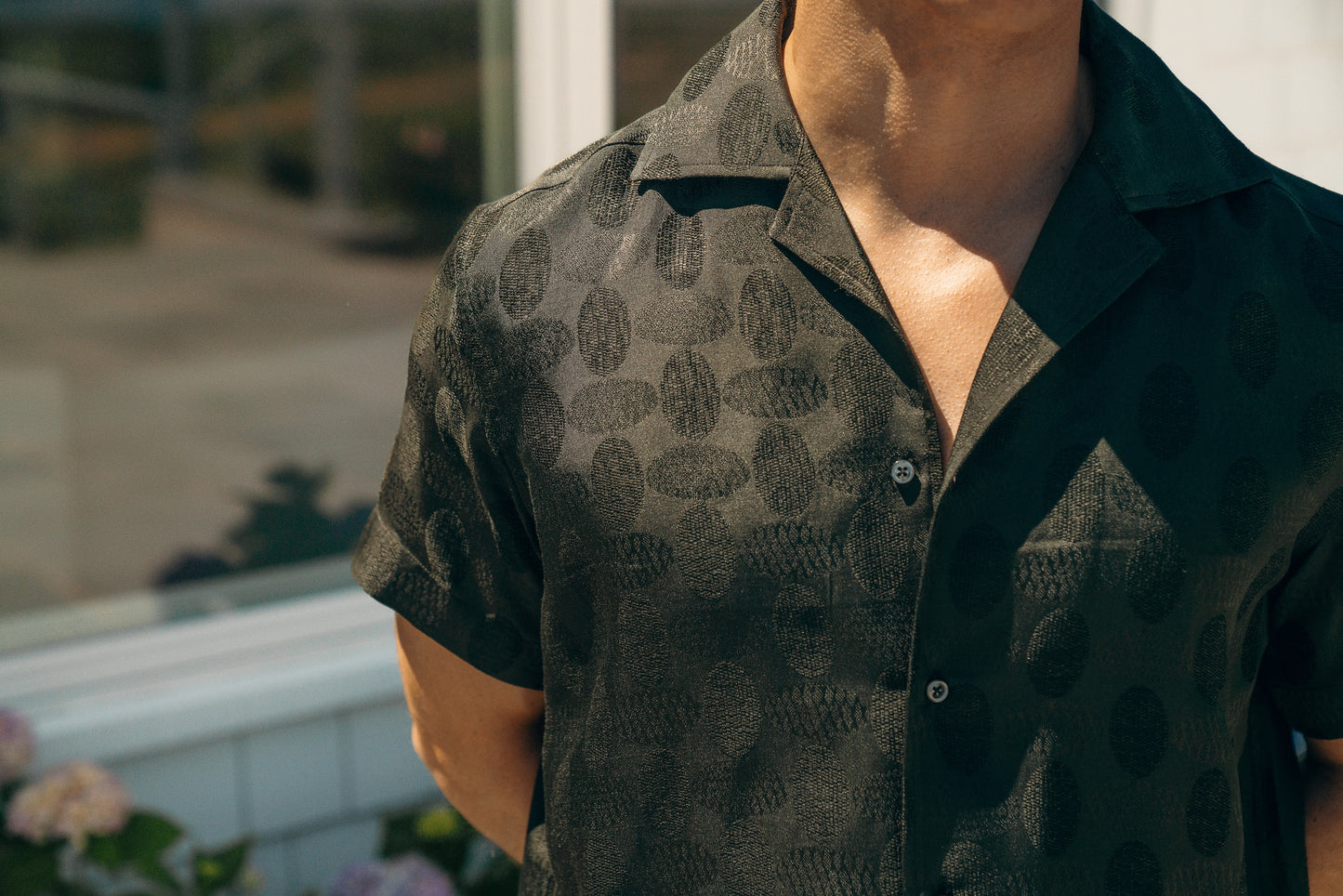
The reason wool can sometimes feel itchy, even if its micron count is close to or lower than that of fibers like cotton or cashmere, is due to several factors beyond just its diameter. Wool fibers, especially those with a higher micron count (above 20 microns), have a scaly surface. These scales create friction when they come into contact with the skin, causing an itchy or prickly sensation. Even fine wool fibers like Merino, which can have a micron count as low as 14 to 19.5 microns, still have these scales, and though they’re less likely to cause irritation, sensitive skin might still feel discomfort. Cotton fibers, by contrast, have a much smoother surface. The absence of scales means cotton feels softer against the skin, even when the micron count is higher than some fine wools.
Another factor at play is wool’s elasticity. Wool is much more elastic and springy compared to cotton and cashmere. When wool fibers press against the skin, they don’t lie flat; instead, they tend to spring back, and this springiness can trigger sensory receptors in the skin, making the fiber feel prickly or itchy. Cotton, being less elastic, tends to conform more to the skin’s surface, which causes less irritation.
Micron variability within wool also plays a role. Even in a batch of fine wool, there can be some variability in the micron count. Occasionally, coarser fibers with a higher micron count, closer to 25 to 30 microns, find their way into the yarn. These coarser fibers can poke into the skin, causing the familiar itchy sensation associated with wool. Cotton and cashmere, when processed well, usually have a more consistent micron count, reducing the likelihood of irritation.
Moisture retention is another culprit behind wool’s itchiness. Wool is known for its ability to absorb and retain moisture, including sweat. When wool becomes damp, the combination of moisture and the fiber’s elasticity can intensify the itching sensation. Cotton, while also absorbent, wicks moisture differently and lacks the same springy structure, so it generally feels more comfortable against the skin when wet.
Skin sensitivity can make a difference in how wool feels. Some people simply have heightened sensitivity to wool fibers. This is why even fine Merino wool, with a micron count similar to or lower than cotton, can still feel itchy to some individuals. Cotton and cashmere, being smoother, are less likely to cause this kind of reaction.
Wool’s scaly structure, springiness, and the variability in fiber diameter contribute to its occasional itchiness, even when it has a similar or lower micron count than cotton or cashmere. Cotton, with its smoother surface and lower elasticity, tends to feel softer and less irritating in comparison.
When considering other fibers, such as viscose, cotton, modal, and lyocell, the story shifts slightly. These fibers are often softer and smoother than standard wool or synthetic fibers, though they don’t quite match the luxurious feel of ultra-fine fibers like vicuña, cashmere, or silk. For instance, viscose, made from regenerated cellulose, usually derived from wood pulp, has a soft, smooth texture and a micron count of around 12 to 16 microns, similar to cotton and cashmere. This smooth surface makes it comfortable for many with sensitive skin, but it may not be as gentle as premium fibers like cashmere or silk.
Cotton, with a micron count ranging from 12 to 20 microns, is soft and breathable, especially finer varieties like Pima or Egyptian cotton. Its natural properties make it a popular choice for sensitive skin, though it’s generally not as luxurious as fibers like silk or cashmere.
Modal and lyocell, both cellulose-based fibers, typically range from 10 to 16 microns. These eco-friendly fibers are often softer and more breathable than standard viscose or cotton. Lyocell, trademarked as Tencel, is especially gentle on sensitive skin due to its hypoallergenic and moisture-wicking properties.
However, none of these fibers can truly compare to the luxurious softness of vicuña, cashmere, or silk. Vicuña, with a micron count of 6 to 12, is the finest, softest fiber available, making it ideal for sensitive skin. Cashmere, at 14 to 16 microns, is softer and more luxurious than cotton or viscose, and it's highly favored by those with sensitive skin for its warmth and ultra-soft texture. Silk, with a micron count of 10 to 13, is not only smooth but also hypoallergenic, making it an excellent choice for sensitive skin. Baby alpaca wool, with a micron count of 18 to 20, is softer than standard cotton or viscose and offers excellent insulation, while also being hypoallergenic.
In the end, while micron count is an important factor in determining softness, the overall structure, behavior, and properties of each fiber play a significant role in how they feel against the skin.
I created a chart to help you see where different fibers stand. As you read it, keep in mind that price is an important factor. Not many people can afford to wear vicuña or high-quality cashmere regularly. Choose what works best for you while considering your budget.
Micron Count and Softness Summary:
| Fiber | Micron Count | Softness/Suitability for Sensitive Skin |
|---|---|---|
| Vicuña | 6-12 | Exceptional softness, ideal for sensitive skin |
| Silk | 10-13 | Smooth, hypoallergenic, gentle on sensitive skin |
| Cashmere | 14-16 | Luxuriously soft, perfect for sensitive skin |
| Modal | 10-16 | Very soft, smooth, good for sensitive skin |
| Viscose | 12-16 | Soft, breathable, comfortable for sensitive skin |
| Cotton | 12-20 | Soft, breathable, good for sensitive skin |
| Baby Alpaca | 18-20 | Soft, hypoallergenic, gentle on sensitive skin |
* I didn’t include every fiber, but if you’re looking for information on a specific one, feel free to reach out. I also left out linen and hemp because the micron measurement used for wool and cashmere doesn’t typically apply to these plant-based fibers in the same way.



